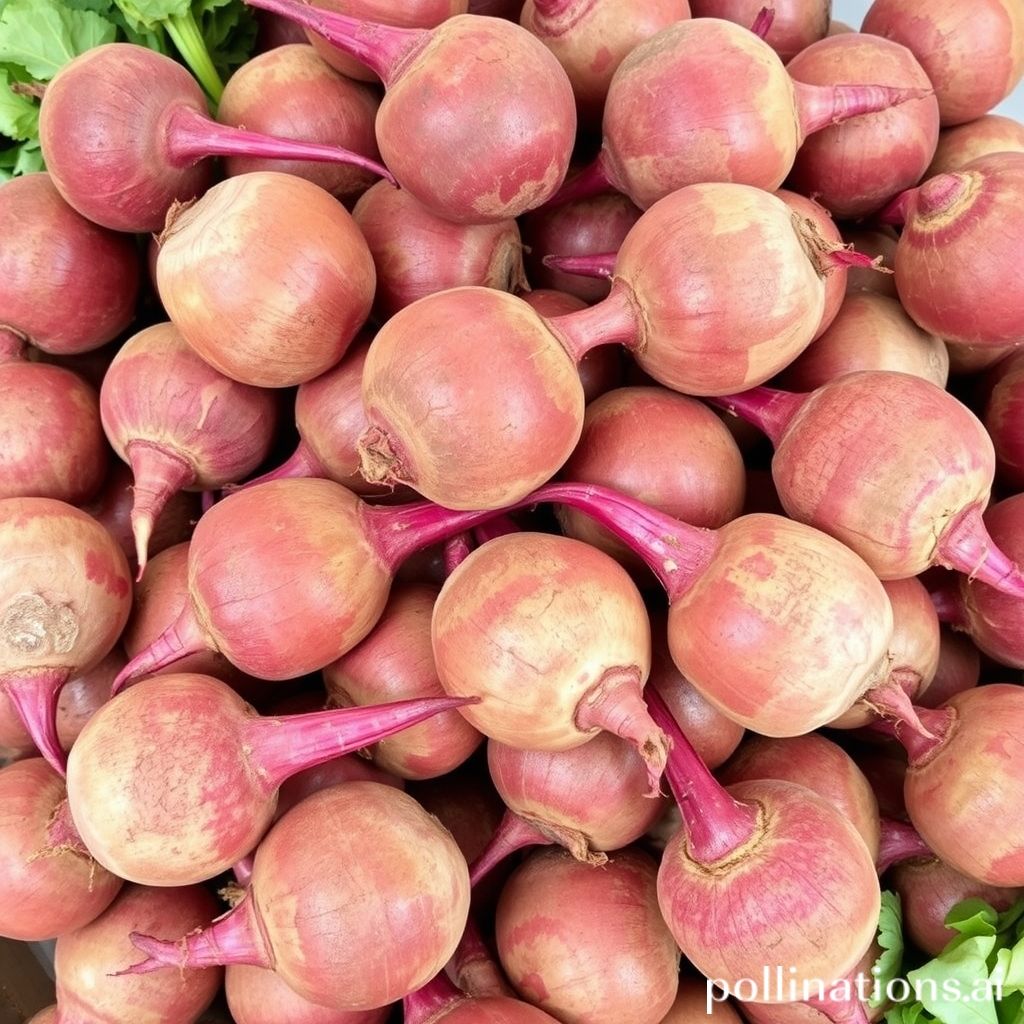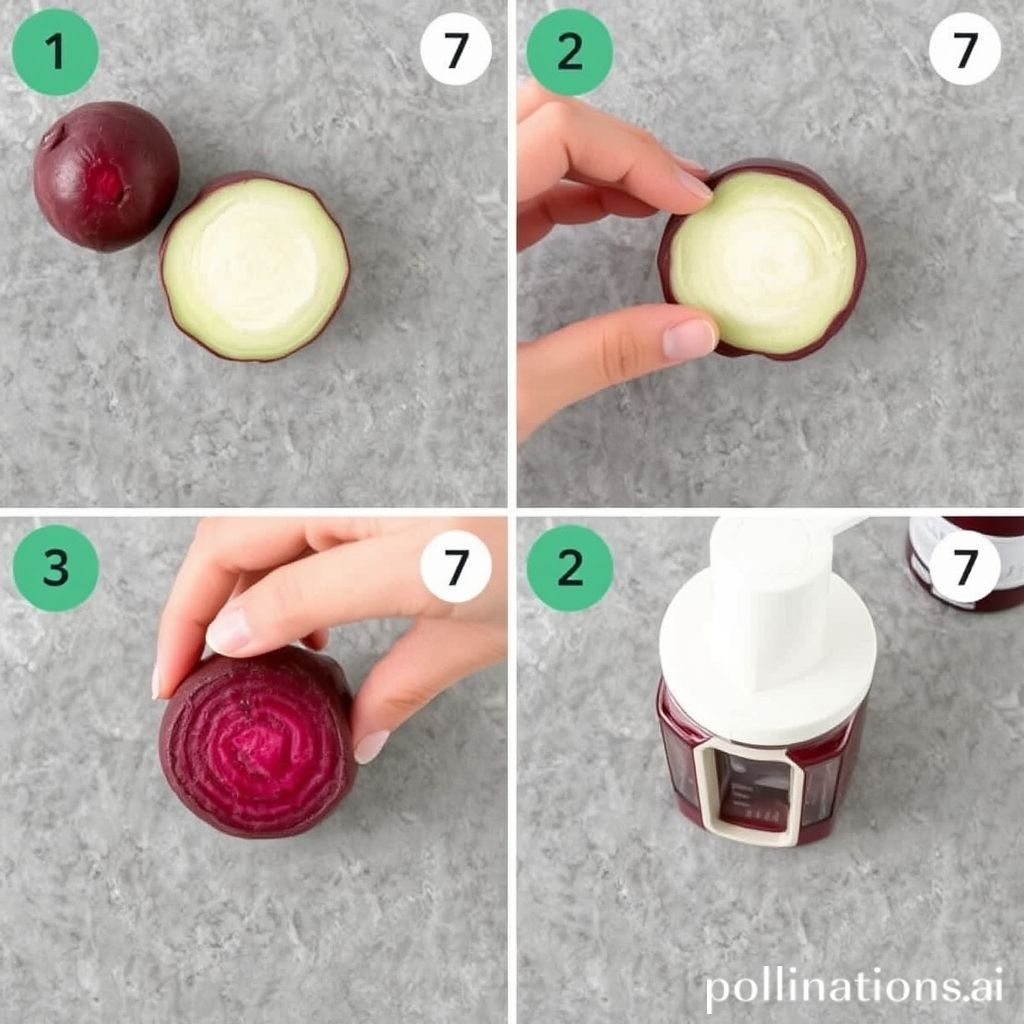Do You Need To Peel Beets For Juicing?
Sure, you’ve probably wondered about this too. Do you really need to go through the hassle of peeling beets before juicing them? Well, the answer might surprise you.
Using the power of modern juicing techniques, it’s actually possible to extract all the goodness from beets without having to peel them. In the course of this might seem unconventional, it’s a game-changer for those who want to save time and effort in the kitchen. In this piece, we’ll delve into the world of beet juicing and discuss whether or not you need to peel those vibrant roots before throwing them into your juicer.

Overall, peeling beets before juicing them can have several benefits. It helps remove any dirt or debris that may be present on the outer skin of the beets, ensuring a cleaner and healthier juice. Peeling also enhances the taste and texture of the juice by eliminating any bitter or earthy flavors from the beet skin. Additionally, the tough and fibrous nature of the skin can affect the overall texture of the juice, so peeling ensures a smoother and easier-to-consume beverage. That being said, it’s important to note that peeling is not mandatory, and some people may choose to leave the skin on, especially if they have thoroughly washed organic beets. Ultimately, the decision to peel or not to peel comes down to personal preference and the quality of the beets being used.
Expert Tip: Peel beets before juicing for a cleaner, tastier and smoother juice. But if using organic beets, washing thoroughly may suffice.Table of Contents
When to Peel Beets for Juicing
1. Organic vs. Non-organic Beets
In terms of juicing beets, whether or not to peel them depends on whether they are organic or non-organic. Organic beets are grown without synthetic pesticides or fertilizers, making their skins safe to consume.
If you have organic beets, you can leave the skin on when juicing. The skin contains valuable nutrients and fiber that can enhance the nutritional value of your juice.
That being said, it’s important to thoroughly wash organic beets before juicing to remove any dirt or contaminants that may be present on the skin.
2. Freshness of the Beets
The freshness of the beets is another factor to consider when deciding whether to peel them for juicing.
If you have fresh, young beets with tender skin, you can juice them with the skin on. The skin of fresh beets is often thin and not bitter in taste.
Whilst, if the beets are older or have been stored for a longer period, the skin may become tougher and more bitter. In such cases, it is recommended to peel the beets before juicing to improve the taste and texture of the juice.
| Pros of Peeling Beets for Juicing | Cons of Peeling Beets for Juicing |
|---|---|
|
|
Steps for Peeling Beets for Juicing
1. Thoroughly Wash the Beets
Prior to peeling the beets, it is crucial to thoroughly wash them to eliminate any dirt or debris. This step guarantees that the beets are clean and ready for juicing.
2. Use a Vegetable Peeler or Knife to Remove the Skin
There are two options for peeling the beets: using a vegetable peeler or a knife. Both methods are effective, but the choice depends on personal preference and the available tools.
- Using a Vegetable Peeler: Hold the beet firmly in one hand and the vegetable peeler in the other. Gently glide the peeler along the beet’s surface, removing the skin in thin strips. Rotate the beet as you peel, ensuring that the entire surface is peeled.
- Using a Knife: If a vegetable peeler is unavailable, a knife can be used to peel the beets. Begin by cutting off the top and bottom ends of the beet. Then, carefully slide the knife under the skin and peel it away, following the contour of the beet.
Regardless of the chosen method, it is important to remove all the skin, as it can impart a bitter taste to the juice. Once the beets are peeled, they are ready to be juiced and incorporated into various recipes.

Benefits of Juicing Beets with Skin On
Juicing beets with their skin on offers several advantages:
1. Retaining Nutrients and Fiber
When you juice beets with the skin intact, you keep a significant amount of nutrients and fiber. The skin of beets contains essential vitamins, minerals, and antioxidants that contribute to their overall health benefits. By keeping the skin on, you ensure that these valuable nutrients are not lost during the juicing process.
2. Adding Vibrant Color to the Juice
The skin of beets adds a vibrant and rich color to the juice. The deep red hue of the beet skin enhances the visual appeal of the juice, making it more enticing and appetizing. Additionally, the color of the juice can also indicate the presence of certain beneficial compounds like betalains, which have antioxidant and anti-inflammatory properties.
3. Enhancing Flavor and Texture
Leaving the skin on when juicing beets can contribute to a more robust flavor profile. The skin adds a slightly earthy taste to the juice, complementing the natural sweetness of the beetroot itself. Moreover, the skin also adds a subtle texture to the juice, providing a pleasant mouthfeel.
4. Time-saving and Convenient
Peeling beets can be time-consuming, especially when juicing a large quantity. By juicing beets with the skin on, you can save time and effort in the preparation process. Simply wash the beets thoroughly to remove any dirt or debris, and they are ready to be juiced.
Additional Tips:
- Choose organic beets whenever possible to minimize exposure to pesticides and chemicals.
- Ensure thorough washing of the beets to remove any traces of dirt or contaminants.
- If you prefer a smoother texture in your juice, you can strain it after juicing to remove any residual beet skin particles.
| Information |
|---|
| By retaining the skin of beets when juicing, you can enjoy the benefits of added nutrients, vibrant color, enhanced flavor, and save time in the preparation process. |
Potential Downsides of Juicing Beets with Skin On
1. Bitter Taste
When you juice beets with the skin on, you may notice a bitter taste in the resulting juice. This bitterness is caused by natural compounds like tannins and betalains found in the beet skin. Some people might find this taste unpleasant and prefer to remove the skin to reduce its impact on the juice’s flavor.
2. Texture Issues
Another drawback of juicing beets with the skin on is the texture of the juice. The skin can add a slightly gritty or fibrous texture, which may not be desirable for some individuals. Removing the skin before juicing can create a smoother and more enjoyable texture.
It’s important to note that the bitterness and texture issues when juicing beets with the skin on can vary depending on personal preference and juicing method. Some people may not mind these aspects and choose to keep the skin for its nutritional benefits.
In contrast, if you prefer a milder taste and smoother texture in your beet juice, it is recommended to peel the beets before juicing. Peeling the beets can help reduce bitterness and eliminate potential texture issues, resulting in a more enjoyable juicing experience.
Conclusion
Peeling beets before juicing them is a personal preference rather than a necessity. The skin of beets is edible and contains valuable nutrients, so leaving it on can add extra nutritional benefits to your juice.
Conversely, if you prefer a smoother texture and want to eliminate any earthy taste, peeling the beets is recommended. Ultimately, the decision to peel or not peel beets for juicing depends on your personal taste preferences and the desired texture of your juice.
Faq about Juicing Beets with the Skin On
FAQ 1: Do I need to peel beets before juicing if they are organic?
No, if the beets are organic, it is not necessary to peel them before juicing. The skin of organic beets is safe to consume and can be included in the juicing process.
FAQ 2: Can I juice beets with the skin on?
Yes, you can juice beets with the skin on. The skin of beets is edible and contains valuable nutrients. Nonetheless, make sure to wash the beets thoroughly before juicing to remove any dirt or contaminants.
FAQ 3: How do I remove the skin from beets for juicing?
If you prefer to remove the skin from beets before juicing, you can do so by using a vegetable peeler or a knife. Simply peel off the outer layer of the beet, ensuring that you remove any tough or uneven parts. After peeling, the beets are ready to be juiced.
FAQ 4: Will juicing beets with the skin on affect the taste?
Juicing beets with the skin on may slightly affect the taste of the juice. Some people find that the skin can add a slightly earthy or bitter flavor to the juice. If you prefer a milder taste, you may choose to peel the beets before juicing.
FAQ 5: Are there any health benefits to juicing beets with the skin on?
Yes, there are health benefits to juicing beets with the skin on. The skin of beets contains fiber, antioxidants, and other nutrients that can contribute to a healthy diet. Including the skin in the juice can enhance its nutritional value.
Read Similar Post:
1. Exploring the Health Benefits of Beet Leaf Tea: A Guide to Brewing the Perfect Cup
2. Is It Beneficial to Combine Carrot, Cucumber, and Beetroot in Your Diet?

